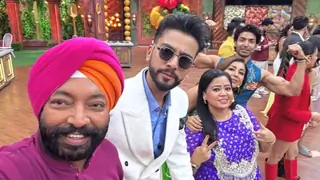Previous Chapter
Next Chapter
India, at the beginning of the twentieth century was under the control of the British, and people of different regions within India, migrated to other regions in search of jobs. While people of Bengal, went northwards, people of Northwest, surged towards the capital. From the north as well as the south, many converged to Bombay and Madras with its great potential for business and export. The railways had bridged the divide, and in the days of the coal driven locomotives, even though it took more than four days to travel from a southern city to the north, it also took the same time to travel from the west to the east. In those days, families still married within their own circles, and interaction between communities, was rare and far apart, and changed after the arrival of the Independent India. In our story, Bombay plays a big part, and so I would like to introduce a family that gets involved with a family from the north.
Govinda Patwardan was born in a simple Maharastrian family, from Nashik. He had migrated to Bombay at the beginning of the twentieth century, with the money he collected from the sale of his ancestral property, on the demise of his father. He started to work in a Parel mill, and with his money bought a patch of land in Dadar, with some fields attached. His wife grew vegetables in the field, and sold them in the market, when the husband went to work in the Mill. Soon, he was promoted as a supervisor, over one hundred workers, and for having done his work well, he was given a fat salary according to standards prevailing at that time. Govinda and his wife had their eldest child in 1910 and named him Gangadhar. The mother took great care of the child and brought him up, as a devout Hindu. She used to teach him all the rituals, and make him participate in them, and take him to the temple whenever she went. When the boy grew, the father sought him admission in a nearby school, and he learnt the rudiments of writing, reading and arithmetic. He was introduced to the English language, and soon he was well versed in this language, and his father thought of sending him to a better school, where subjects were taught in English and even in this school he fared very well, and joined the sport of cricket, and became a good player and joined all the tournaments that were conducted by the schools.
The Bombay Electric Supply & Tramways Company Limited started the first electrically operated tram-car on Bombay's roads in 1907. The double decker trams were introduced in September, 1920. Dadar Tram Terminus was popularly called Dadar TT. Gangadhar was going to his school in Parel, in the tram. Gangadhar grew among friends who belonged to different communities, and built solid friendships with them, and even joined them in their festivals, just as his friends joined him in his festivities. His friends from the Parel school, visited him, and enjoyed his mother's cooking, and took vegetable from her garden for their parents.
Dadar in the 1920s was a quiet place, and people could walk on the roads, as there was not much vehicular traffic. The victorias, or tongas drawn by a horse were a common sight, and the boys would watch dainty ladies traveling up and down on them, with their husbands. Dadar train station was very close by, and people from other towns and villages, would come to Bombay and alight at this station. Gangadhar often had his relatives visit their family from Nashik, coming to his home by train. One day, a friend of Govinda Patwardhan had a visitor, from his home town, who brought news of a proposal for his son Gangadhar. Her name was Kavita Pednekar, and she was from a good family. Govinda had known her parents, and they decided to go and visit them as soon as possible. The father told his son, and he too felt that as he had completed his schooling and was employed in the Mill, and earning good money, decided that it was time for him to get married. So, one fine day, the marriage took place between Gangadhar and Kavita, in the village of the bride. They got married on 10th April, 1933.
In the following year, she got a son, whom they named Vidhyadhar, and after eight years their next son was born whom they named Sridhar. Both Vidyadhar and Sridhar had their early eduction in nearby schools, and the elder son graduated from Elphinstone College in Bombay with distinction, and got his degree qualifying him to teach in a college, and he took up a job as history professor in Ruparel College when it was opened in 1952. Ever since, many a young Indian businessman, has studied under him, and has had a great regard to his abilities. In spite of being recognized as one of the best teachers, he carried himself, like a humble man, and never projecting himself in the public eye. His younger brother was always hot tempered, and always felt at a disadvantage in front of his brilliant elder brother, and each time he would throw tantrums, his mother would side him, and pacify him, and give him all the things he wanted, without really trying to understand his grievances. He had an inferiority complex, and neither his elder brother could help, even though he tried to be as accommodating to him as possible.
Just when Vidyadhar got his teaching job, his father thought of demolishing his old house, selling his fields, and with the money build a modern house, in which the marriages of his children and grand children would take place, with great pomp. The elder son was married to one Vibha More, in 1963 and Sridhar was married to one Shyamal Kalevar in 1975. The father, Gangadhar and his wife, lived with their two sons and their wives in harmony, as long as the father was alive. The old family traditions were kept alive by the father and mother, and the young boys, in spite of modern influences, never showed disrespect to their elders. The old way of life was still preserved, with every festival that came by during the year. After Sridhar got married in that same year in November, Gangadhar passed away, and made the whole property in the elder son's name. It was taken for granted, that the younger brother and his family will live in the same house as a joint family. Gangadhar had build many rooms and a spacious hall, for the family, and the children they might get. There were stairways leading to the first floor and to the covered terrace, overlooking the vast courtyard, with an additional out house.
Their mother had passed away seven years after Vidyadhar and Vibha were married, and the latter looked after her mother in law with great devotion and religiosity, until her death. This sense of devotion, was inculcated in Vibha by her mother, from her childhood, with examples taken from her holy scriptures, and from the epics of Hinduism. Vibha transferred the love of her mother to her mother in law. She had the belief, that she was in the place of her own mother, and serving her needs was a way to gain blessings from God. She was a great devotee of Ganapati, and on his festival day, she would religiously follow all the rituals, with the family. She was a great help to her mother in law and she loved her as if she was her daughter. She did not have any girls, and she filled that need. There was no pretense in her behavior, and she was open and outspoken to everyone who came into her life.
The two Patwardhan brothers spent life with their wives in this house built by their father, on their grand father's estate. The younger brother was hot tempered as ever, and the elder one had not only to be his brother, but had to be his father too. For some time Sridhar worked in a Parel Mill, but when the workers were layed off, he started a small business with the money that he got as gratuity.

























